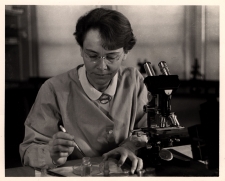In the GDC 2.2 McClintock Release, the following features have been released:
- OncoMatrix: New sorting options for toggling by consequence and/or copy number variation (CNV) data, and advanced filtering for grouping mutations
- ProteinPaint: Advanced filtering to visualize mutations in any genomic locus and integration with clinical variables
- Sequence Reads Visualization: Added streaming capability, allowing researchers to view a sample of the data while waiting for all reads to load
- BAM Slicing Download: Removed the limit on the maximum size of the request region
- Annotations Table: Case and File Summary pages now include an annotations table
- Gene Expression API: Released an API endpoint for retrieving gene expression values
This release signifies the official launch of GDC 2.0 and the retirement of the legacy GDC Data Portal (1.0).
GDC releases are named alphabetically in honor of distinguished scientists and their significant research contributions. The GDC 2.2 McClintock Release was named after Barbara McClintock.
For more information, please refer to the GDC Data Portal Release Notes. Updates to documentation and supporting videos can be found in the GDC 2.0 Data Portal User’s Guide and the GDC 2.0 Video Tutorial.
The GDC welcomes feedback on GDC 2.0 through our GDC Support Center at support@nci-gdc.datacommons.io.

It sounds like one of the most obscure of career fields: corn geneticist. Yet, knowledge of the inner workings of one of the planet’s most produced crop matters greatly—and has yielded new knowledge about the adaptability of corn and how genes work. Barbara McClintock, a Cold Spring Harbor Laboratory geneticist, discovered that genes can move around the genome. The concept of “jumping genes”—transposons—ran squarely against conventional wisdom of the time that genes were in fixed positions on chromosomes. After one particularly contentious 1951 lecture about her findings, McClintock commented, “They thought I was crazy, absolutely mad.” Further studies and a preponderance of evidence overcame scientific skepticism. More than 30 years later, McClintock and her work received the ultimate ratification: the 1983 Nobel Prize in Physiology or Medicine.
